Prediction of Tool Point Frequency Response Functions within Machine Tool Work Volume Considering the Position and Feed Direction Dependence
Abstract
1. Introduction
2. Theoretical Background
2.1. Modal Theory and Matrix Transformation
2.2. BP Neural Network and PSO Algorithm
2.2.1. BP Neural Network
2.2.2. Particle Swarm Optimization Algorithm
3. Case Study
3.1. Impact Testing Based on Orthogonal Experiment Design
3.2. BP-PSO Method for Modal Parameters Prediction
4. Chatter Stability Analysis Considering Uncertain Position and Feed Direction
5. Conclusions
- (1)
- The displacements of the worktable, saddle and spindle system along the x, y and z directions represents the machining position, and the feed direction is represented by the rotation angle θ around the machine tool coordinate system. 8 levels of each factor were determined within its variation range, and then an orthogonal table with 64 schemes was designed. For each scheme, the machine tool was driven to the related spatial structure to measure the x and y directional tool point FRFs, and the matrix transformation method was used to calculate the related FRFs in u and v directions.
- (2)
- Three obvious modes for each tool point FRF were observed, and the related modal parameters were identified according to modal theory. Thus, considering the u and v directions, 18 modal parameters should be predicted for one machining position and feed direction combination. To avoid the complex training process and improve the convergence speed, 6 BP neural networks were established for predicting the modal parameters of six modes respectively. Then these BP neural networks were trained with the information of the randomly selected 58 schemes from the Table 2 and the optimized initial linking weights and thresholds using the PSO algorithm. The accuracies of established BP neural networks were verified by the measured modal parameters related to the combinations of machining position and feed direction included in the testing sample.
- (3)
- Moreover, these BP neural networks were used to research the milling stability within the machine tool work volume. Distributions of the axial limiting cutting depth within the feed direction angle range [0°, 360°] at 9 selected machining positions show that the z directional displacement and feed direction θ have significant effects on the limiting axial cutting depth. The same phenomenon was also observed from results of the range analysis and variance analysis performed according to the information in orthogonal Table 2. The optimal level for each factor was determined to obtain an optimal combination of machining position and feed direction with higher limiting axial cutting depth.
Author Contributions
Funding
Conflicts of Interest
Nomenclature
| ωr | rth modal natural frequency (Hz) |
| ξr | rth modal damping ratio (%) |
| Mr | rth modal mass (kg) |
| Ker | rth modal stiffness respectively (×109 N/m) |
| Ar | rth amplitude of the imaginary part of tool point FRF (m/N) |
| XMT and YMT | machine tool coordinate system |
| θ | feed direction angle (°) |
| Ufeed and Vfeed | feed direction coordinate system |
| Gxy | position and feed direction-dependent matrix |
| ΛR | real part of the complex eigenvalue Λ |
| ΛI | imaginary part of the complex eigenvalue Λ |
| Nt | tool tooth number |
| Kt | tangential cutting force coefficient (MPa) |
| Kr | radial cutting force coefficient (MPa) |
| ap | axial cutting depth (mm) |
| ωc | chatter frequency (Hz) |
| T | tooth passing period (s) |
| n | spindle speed (rpm) |
| G0(iωc) | directional matrix |
| aplim-feed | limiting axial cutting depth considering the feed direction (mm) |
| X | input variable vector of a BP neural network |
| Y | output variable vector of a BP neural network |
| Oik | output of the kth neuron in ith layer of a BP neural network |
| f(·) | excitation function of a BP neural network |
| wkj | linking weight between the jth neuron in i − 1th layer and the kth neuron in ith layer |
| Ψik | threshold of the kth neuron in ith layer |
| Δw | linking weight adjustment |
| η | learning rate of a BP neural network |
| yaq | qth actual output value of a BP neural network |
| ypq | qth predicted output value of a BP neural network |
| Xi | ith position vector of a PSO algorithm |
| Vi | ith velocity vector of a PSO algorithm |
| ω | inertia weight of a PSO algorithm |
| c | acceleration factor of a PSO algorithm |
| r | random number of a PSO algorithm |
| Ninput | neuron number of the input layer |
| Noutput | neuron number of the output layer |
| Nhi | neuron number of the ith hidden layer |
| Rj | range value of the jth factor |
| kij | sum of the aplim_feed values calculated using the ith level of the jth factor |
| xp | aplim_feed value calculated using the pth scheme designed in the orthogonal table |
| Nump | total number of designed schemes in the orthogonal table |
| SSj | sum of squared deviation of the jth factor |
| dfT | total degree of freedom |
| dfj | degree of freedom for the jth factor |
| Sj | variance of the jth factor |
| Fj | F value of the jth factor |
| Fα(dfj, dfe) | standard F value |
References
- Munoa, J.; Beudaert, X.; Dombovari, Z.; Altintas, Y.; Budak, E.; Brecher, C.; Stepan, G. Chatter suppression techniques in metal cutting. CIRP Ann.—Manuf. Technol. 2016, 65, 785–808. [Google Scholar] [CrossRef]
- Paul, S.; Morales-Menendez, R. Active Control of Chatter in Milling Process using Intelligent PD/PID Control. IEEE Access. 2018, 6, 72698–72713. [Google Scholar] [CrossRef]
- Wan, M.; Dang, X.B.; Zhang, W.H.; Yang, Y. Optimization and improvement of stable processing condition by attaching additional masses for milling of thin-walled workpiece. Mech. Syst. Signal Process. 2018, 103, 196–215. [Google Scholar] [CrossRef]
- Altintas, Y.; Budak, E. Analytical prediction of stability lobes in milling. CIRP Ann. Manuf. Technol. 1995, 44, 357–362. [Google Scholar] [CrossRef]
- Zulaika, J.J.; Campa, F.J.; Lacalle, L.N.L.D. An integrated process-machine approach for designing productive and lightweight milling machines. Int. J. Mach. Tools Manuf. 2011, 51, 591–604. [Google Scholar] [CrossRef]
- Özşahin, O.; Budak, E.; Özgüven, H.N. Identification of bearing dynamics under operational conditions for chatter stability prediction in high speed machining operations. Precis. Eng. 2015, 42, 53–65. [Google Scholar] [CrossRef]
- Mejri, S.; Gagnol, V.; Le, T.P.; Sabourin, L.; Ray, P. Dynamic characterization of machining robot and stability analysis. Int. J. Adv. Manuf. Technol. 2016, 82, 351–359. [Google Scholar] [CrossRef]
- Law, M.; Phani, A.S.; Altintas, Y. Position-dependent multibody dynamic modeling of machine tools based on improved reduced order models. J. Manuf. Sci. Eng. 2013, 135, 2186–2199. [Google Scholar] [CrossRef]
- Zhang, L.; Gao, W.G.; Zhang, D.W.; Chang, W.F.; Nie, Y.X. Rapid evaluation of machine tools with position-dependent milling stability based on response surface model. Adv. Mech. Eng. 2016, 8, 1–12. [Google Scholar] [CrossRef]
- Hung, J.P.; Lai, Y.L.; Luo, T.Z. Analysis of the machining stability of a milling machine considering the effect of machine frame structure and spindle bearings: Experimental and finite element approaches. Int. J. Adv. Manuf. Technol. 2013, 68, 2393–2405. [Google Scholar] [CrossRef]
- Li, T.J.; Ding, X.H.; Cheng, K. Machine tool dynamics based on spatial statistics. J. Mech. Eng. 2015, 51, 87–94. [Google Scholar] [CrossRef]
- Luo, B.; Pan, D.W.; Cai, H.; Mao, X.Y.; Peng, F.Y.; Mao, K.M.; Li, B. A method to predict position-dependent structural natural frequencies of machine tool. Int. J. Mach. Tools Manuf. 2015, 92, 72–84. [Google Scholar] [CrossRef]
- Law, M.; Altintas, Y.; Phani, A.S. Rapid evaluation and optimization of machine tools with position-dependent stability. Int. J. Mach. Tools Manuf. 2013, 68, 81–90. [Google Scholar] [CrossRef]
- Tunc, L.T.; Stoddart, D. Tool path pattern and feed direction selection in robotic milling for increased chatter-free material removal rate. Int. J. Adv. Manuf. Technol. 2017, 89, 2907–2918. [Google Scholar] [CrossRef]
- Baumann, J.; Siebrecht, T.; Wiederkehr, P. Modelling the dynamic behavior of a machine tool considering the tool-position-dependent change of modal parameters in a geometric-kinematic simulation system. Procedia CIRP 2017, 62, 351–356. [Google Scholar] [CrossRef]
- Deng, C.Y.; Miao, J.G.; Wei, B.; Feng, Y.; Zhao, Y. Evaluation of machine tools with position-dependent milling stability based on kriging model. Int. J. Mach. Tools Manuf. 2018, 124, 33–42. [Google Scholar] [CrossRef]
- Liu, X.; Li, Y.G.; Chen, G.X. Multimode tool tip dynamics prediction based on transfer learning. Obotics Comput.-Integr. Manuf. 2019, 57, 146–154. [Google Scholar] [CrossRef]
- Chen, G.X.; Li, Y.G.; Liu, X. Pose-dependent tool tip dynamics prediction using transfer learning. Int. J. Mach. Tools Manuf. 2019, 137, 30–41. [Google Scholar] [CrossRef]
- Yang, Y.Q.; Liu, Q. Analysis and experimental investigation on the cutting process stability of machine tool. Int. J. Mach. Tools Manuf. 2014, 33, 101–105. [Google Scholar] [CrossRef]
- Schmitz, T.L.; Smith, K.S. Machining Dynamics, 1st ed.; Springer: London, UK, 2009. [Google Scholar] [CrossRef]
- Munoa, J.; Zetarain, M.; Bediaga, I.; Lizarralde, R. Optimization of hard material roughing by means of a stability model. In Proceedings of the 8th CIRP International Workshop on Modelling of Machining Operations, Chemnitz, Germany, 10–11 May 2005; pp. 431–438. [Google Scholar]
- Deng, C.Y.; Feng, Y.; Miao, J.G.; Ma, Y.; Wei, B. Multi-objective machining parameters optimization for chatter-free milling process considering material removal rate and surface location error. IEEE Access 2019, 7, 183823–183837. [Google Scholar] [CrossRef]
- Özşahin, O.; Budak, E.; Özgüven, H.N. In-process tool point FRF identification under operational Conditions using inverse stability solution. Int. J. Mach. Tools Manuf. 2014, 89, 64–73. [Google Scholar] [CrossRef]
- Hu, S.; Huang, Z.X.; Zhang, Y.M.; Lv, C.M. Reliability analysis of the chatter stability during milling using a neural network. Int. J. Aerosp. Eng. 2016, 1, 1–10. [Google Scholar] [CrossRef]
- Ren, C.H.; An, N.; Wang, J.Z.; Li, L.; Hu, B.; Shang, D. Optimal parameters selection for BP neural network based on particle swarm optimization: A case study of wind speed forecasting. Knowl. Based Syst. 2014, 56, 226–239. [Google Scholar] [CrossRef]
- Wang, Y.S.; Qian, H.; Zhen, D.W. Emulsifier fault diagnosis based on back propagation neural network optimized by particle swarm optimization. In Proceedings of the 2nd International Conference on Systems and Informatics (ICSAI), Shanghai, China, 15–17 November 2014. [Google Scholar] [CrossRef]
- Leyton, A.; Pezoa-Conte, R.; Barriga, A.; Buschmannad, A.H.; Mäki-Arvelab, P.; Mikkolabe, J.P.; Lienqueoa, M.E. Identification and efficient extraction method of phlorotannins from the brown seaweed macrocystis pyrifera using an orthogonal experimental design. Algal Res. 2016, 16, 201–208. [Google Scholar] [CrossRef]
- Yan, R.; Tang, X.W.; Peng, F.Y.; Li, Y.T.; Li, H. RCSA-based method for tool frequency response function identification under operational conditions without using noncontact sensor. J. Manuf. Sci. Eng. 2017, 139, 1–11. [Google Scholar] [CrossRef]
- Xie, Y.M.; Zhang, F.; Wang, Z.H.; Huang, R.Y.; Yang, J.F.; Hu, Y.C. Compensation of twist springback in high-strength steel based on gradient die radius. J. Mech. Eng. 2019, 55, 91–97. [Google Scholar] [CrossRef]
- Li, J.; Yang, F.B.; Zhang, H.G.; Wu, Z.; Tian, Y.M.; Hou, X.C.; Xu, Y.H.; Ren, J. Comparative analysis of different valve timing control methods for single-piston free piston expander-linear generator via an orthogonal experimental design. Energy 2020, 195. [Google Scholar] [CrossRef]
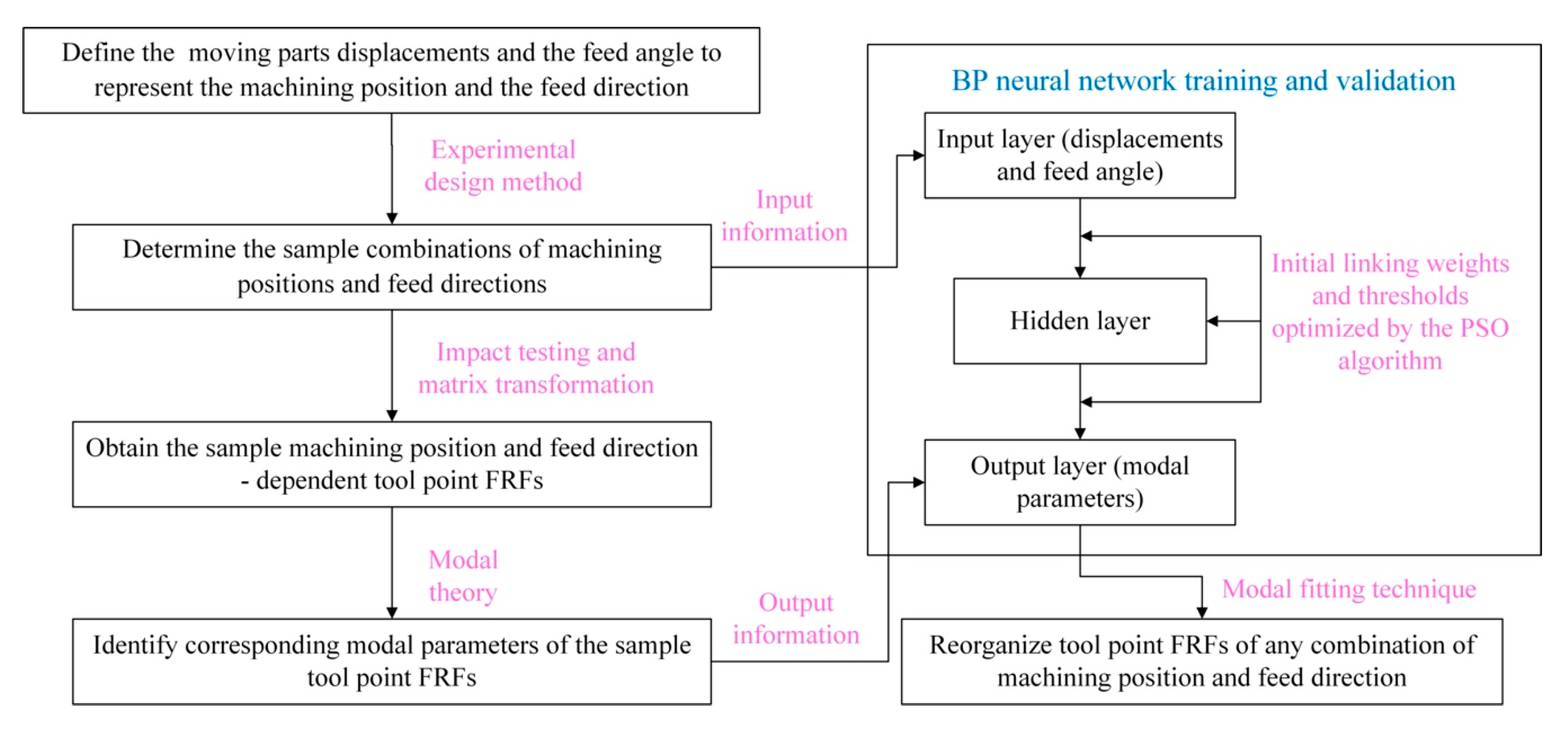
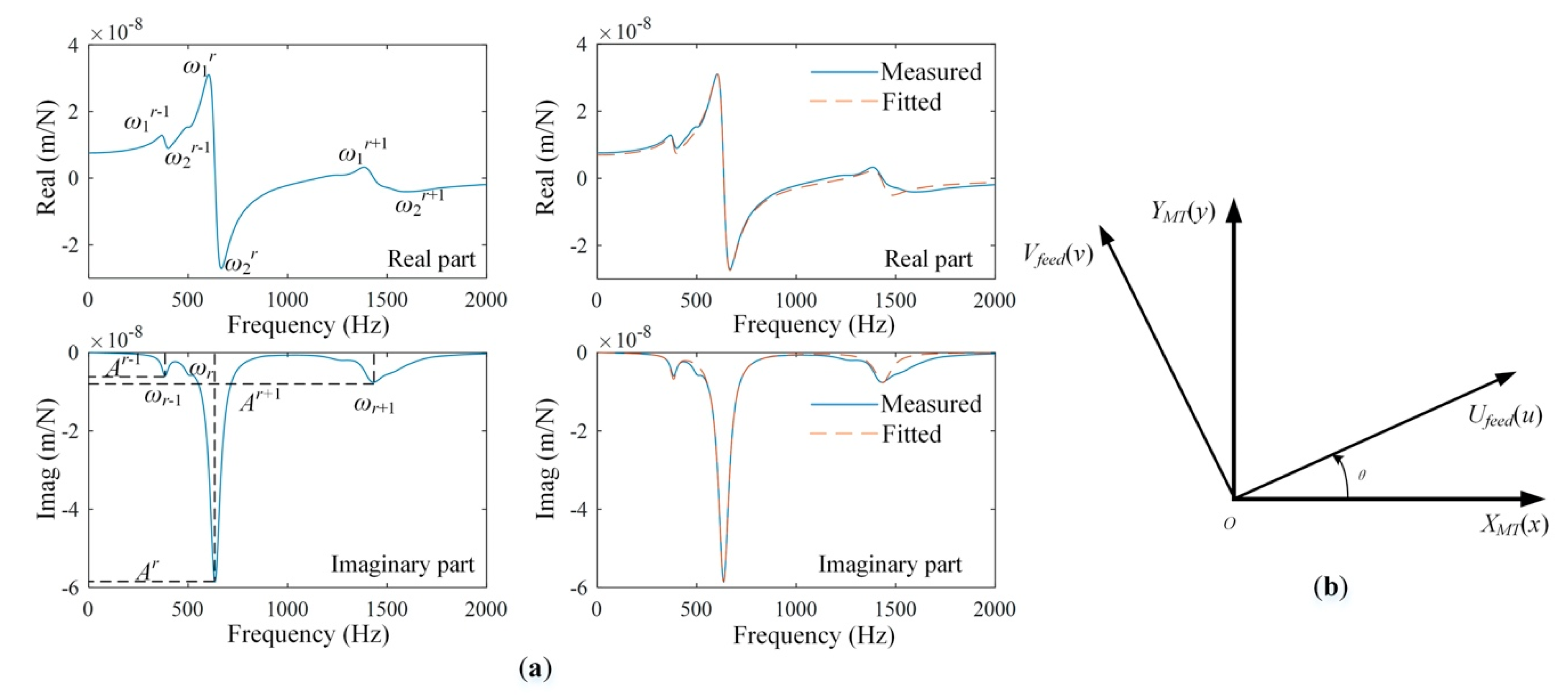
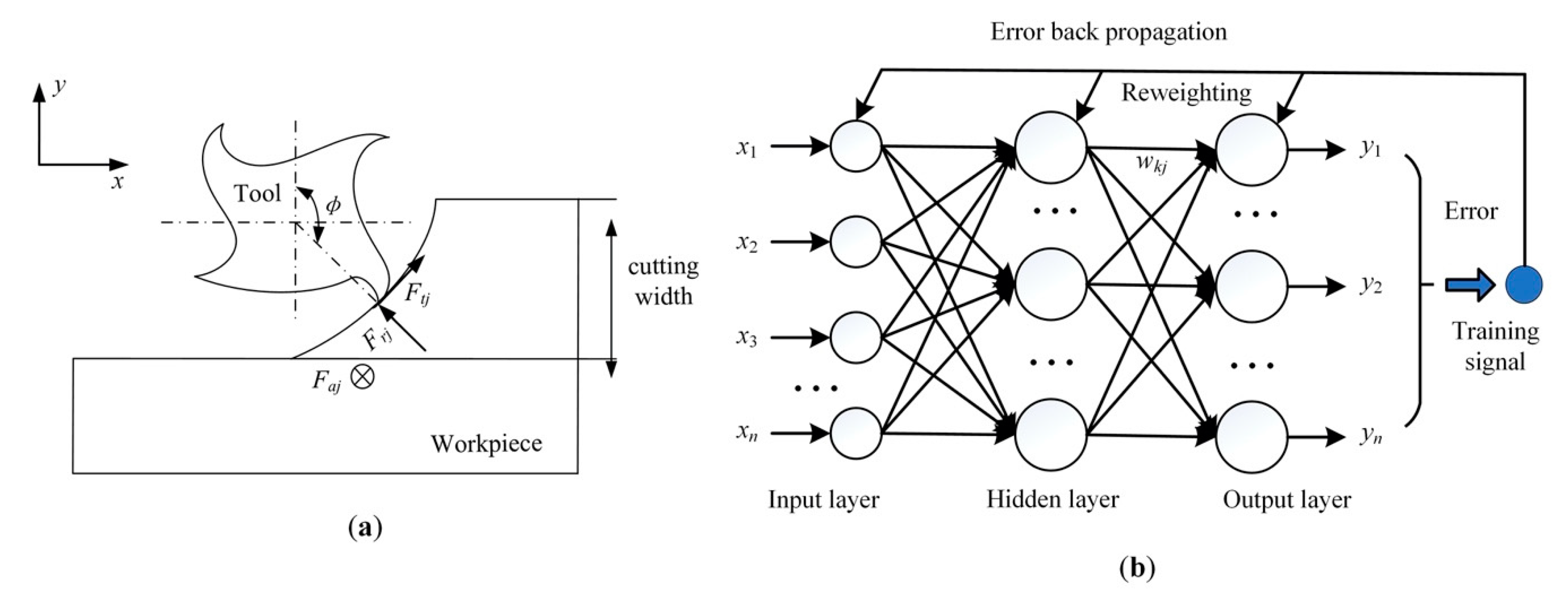
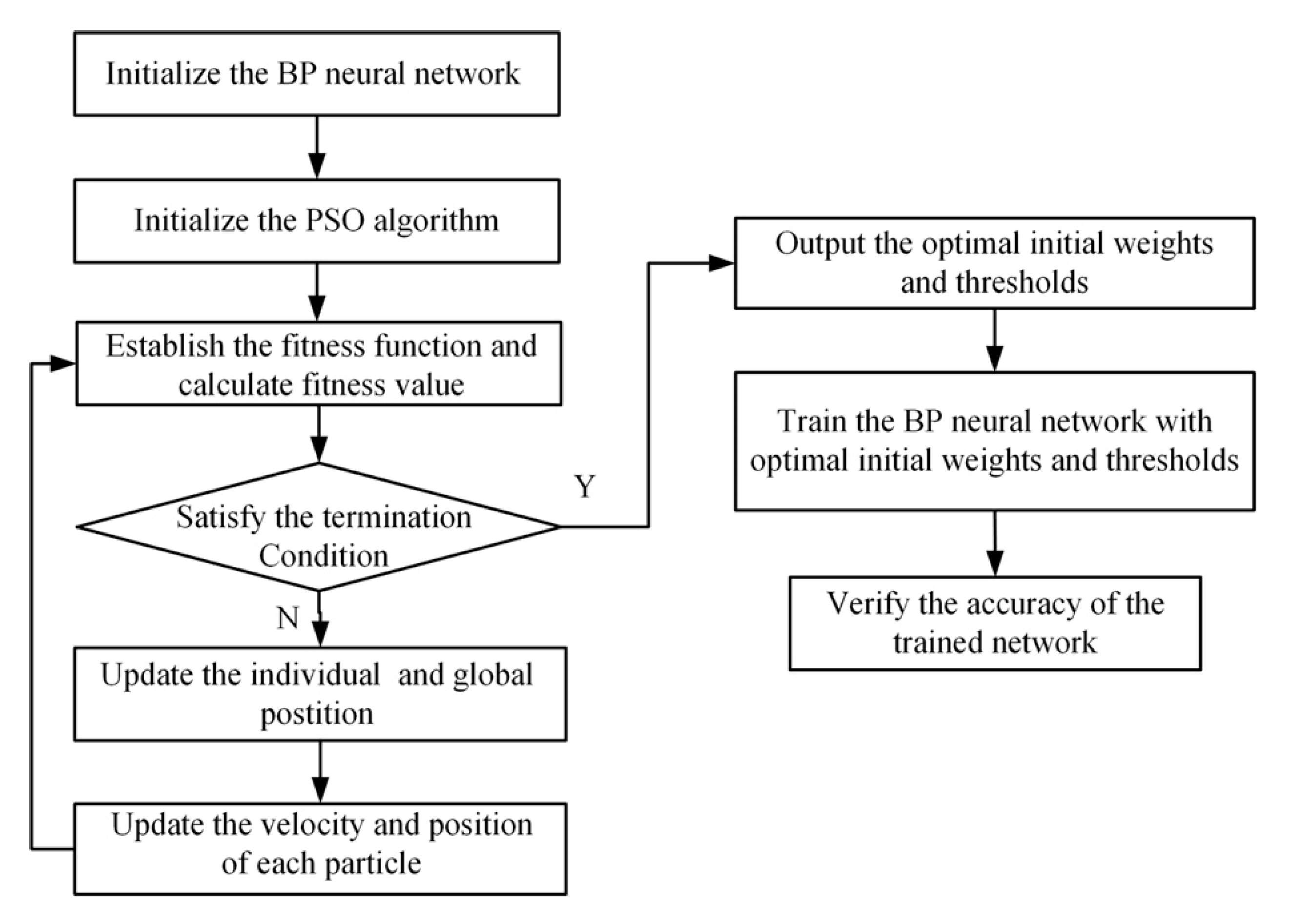
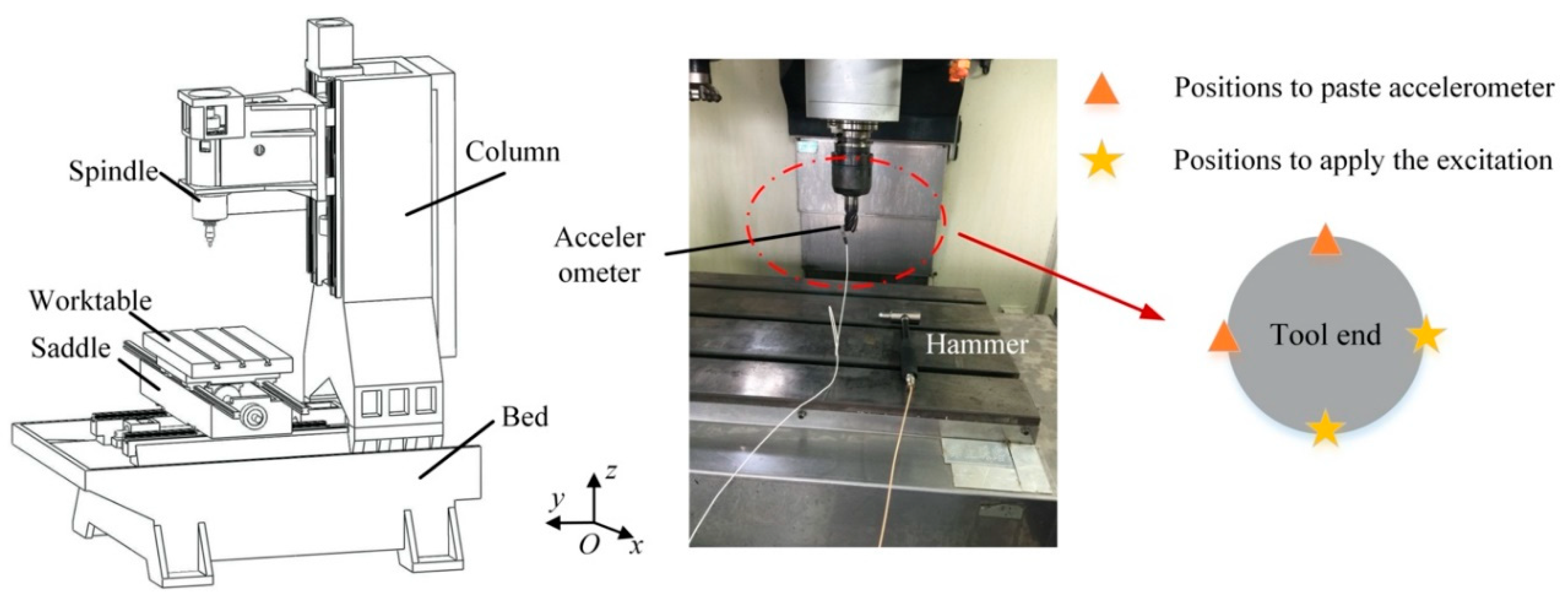

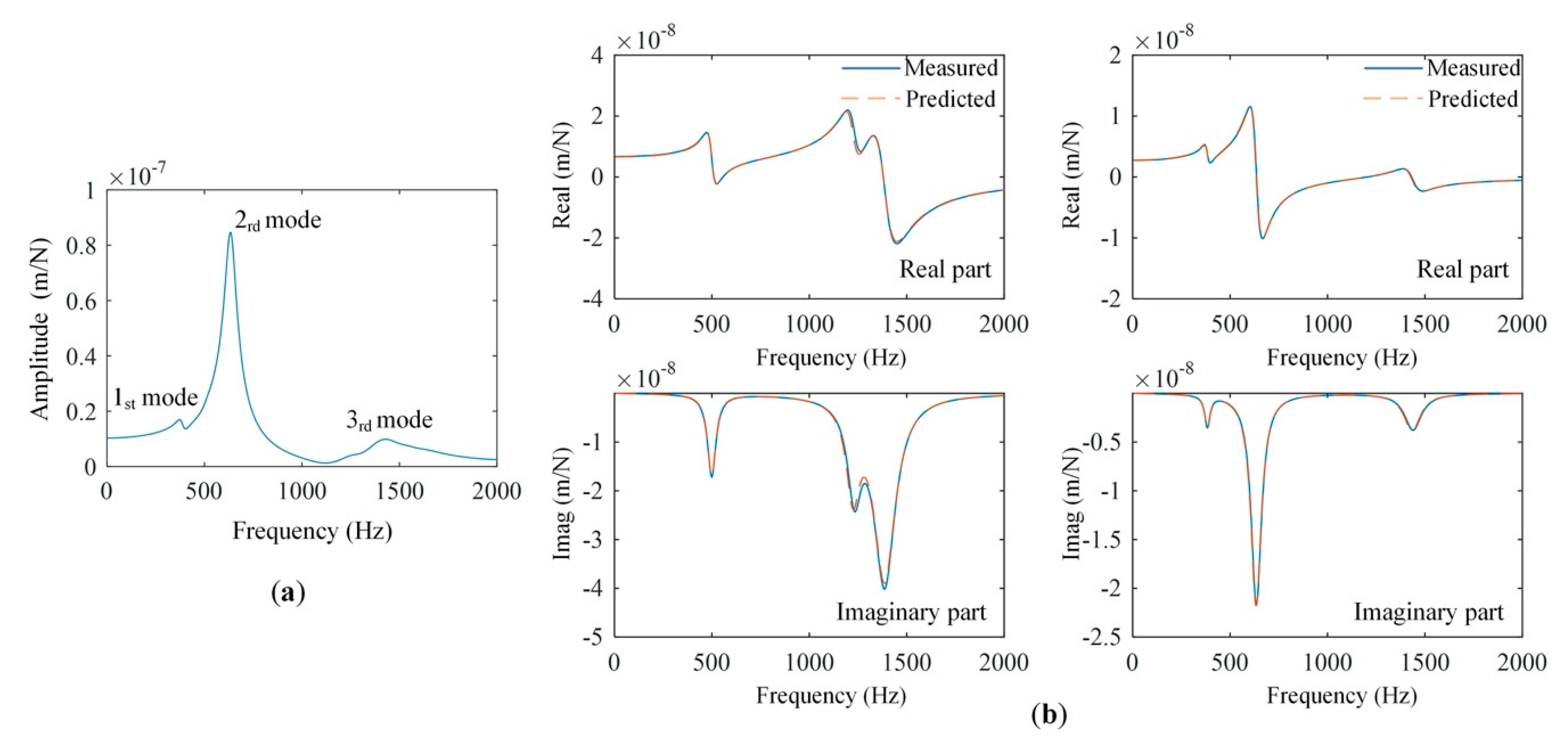

| Factors | Levels | |||||||
|---|---|---|---|---|---|---|---|---|
| 1 | 2 | 3 | 4 | 5 | 6 | 7 | 8 | |
| x/mm | 70 | 140 | 210 | 280 | 350 | 420 | 490 | 550 |
| y/mm | 50 | 100 | 150 | 200 | 250 | 300 | 350 | 400 |
| z/mm | 50 | 100 | 150 | 200 | 250 | 300 | 350 | 400 |
| θ/° | 22.5 | 45 | 67.5 | 90 | 112.5 | 135 | 157.5 | 180 |
| n/rpm | 2000 | 4000 | 6000 | 8000 | 10,000 | 12,000 | 14,000 | 15,000 |
| No. | x | y | z | θ | n | aplim-feed/mm | No. | x | y | z | θ | n | aplim-feed/mm |
|---|---|---|---|---|---|---|---|---|---|---|---|---|---|
| 1 | 7 | 4 | 6 | 3 | 7 | 7.53 | 33 | 1 | 2 | 2 | 2 | 2 | 4.74 |
| 2 | 3 | 8 | 6 | 4 | 5 | 7.27 | 34 | 5 | 5 | 1 | 2 | 3 | 4.14 |
| 3 | 7 | 1 | 7 | 2 | 6 | 7.48 | 35 | 3 | 4 | 2 | 8 | 1 | 2.57 |
| 4 | 6 | 5 | 2 | 4 | 6 | 8.02 | 36 | 8 | 2 | 7 | 3 | 4 | 4.80 |
| 5 | 3 | 3 | 1 | 7 | 2 | 1.65 | 37 | 6 | 1 | 6 | 8 | 2 | 2.33 |
| 6 | 4 | 4 | 1 | 6 | 8 | 23.3 | 38 | 2 | 8 | 7 | 6 | 1 | 1.53 |
| 7 | 5 | 7 | 3 | 4 | 1 | 1.77 | 39 | 4 | 8 | 5 | 2 | 4 | 6.95 |
| 8 | 5 | 3 | 7 | 8 | 5 | 7.29 | 40 | 1 | 3 | 3 | 3 | 3 | 1.87 |
| 9 | 4 | 3 | 2 | 5 | 7 | 10.7 | 41 | 1 | 6 | 6 | 6 | 6 | 15.1 |
| 10 | 2 | 7 | 8 | 5 | 2 | 1.53 | 42 | 2 | 3 | 4 | 1 | 6 | 7.64 |
| 11 | 4 | 6 | 7 | 4 | 2 | 1.68 | 43 | 8 | 3 | 6 | 2 | 1 | 5.83 |
| 12 | 2 | 2 | 1 | 4 | 7 | 8.80 | 44 | 8 | 1 | 8 | 4 | 3 | 1.37 |
| 13 | 4 | 1 | 4 | 7 | 5 | 7.12 | 45 | 3 | 6 | 8 | 2 | 7 | 7.17 |
| 14 | 6 | 6 | 1 | 3 | 5 | 6.94 | 46 | 1 | 4 | 4 | 4 | 4 | 4.02 |
| 15 | 8 | 7 | 2 | 6 | 5 | 8.92 | 47 | 7 | 6 | 4 | 5 | 1 | 1.55 |
| 16 | 3 | 1 | 3 | 5 | 4 | 3.87 | 48 | 8 | 4 | 5 | 1 | 2 | 5.14 |
| 17 | 8 | 5 | 4 | 8 | 7 | 6.98 | 49 | 5 | 1 | 5 | 6 | 7 | 12.75 |
| 18 | 4 | 2 | 3 | 8 | 6 | 6.80 | 50 | 4 | 7 | 6 | 1 | 3 | 4.66 |
| 19 | 7 | 5 | 3 | 6 | 2 | 1.49 | 51 | 2 | 5 | 6 | 7 | 4 | 3.97 |
| 20 | 3 | 5 | 7 | 1 | 8 | 9.23 | 52 | 7 | 3 | 5 | 4 | 8 | 7.74 |
| 21 | 6 | 4 | 7 | 5 | 3 | 1.21 | 53 | 3 | 2 | 4 | 6 | 3 | 1.19 |
| 22 | 2 | 4 | 3 | 2 | 5 | 9.63 | 54 | 6 | 3 | 8 | 6 | 4 | 4.10 |
| 23 | 5 | 4 | 8 | 7 | 6 | 8.05 | 55 | 6 | 7 | 4 | 2 | 8 | 8.87 |
| 24 | 8 | 6 | 3 | 7 | 8 | 7.13 | 56 | 7 | 2 | 8 | 1 | 5 | 9.90 |
| 25 | 5 | 2 | 6 | 5 | 8 | 13.91 | 57 | 1 | 5 | 5 | 5 | 5 | 10.08 |
| 26 | 7 | 7 | 1 | 8 | 4 | 4.88 | 58 | 5 | 8 | 4 | 3 | 2 | 2.26 |
| 27 | 4 | 5 | 8 | 3 | 1 | 2.49 | 59 | 1 | 8 | 8 | 8 | 8 | 6.11 |
| 28 | 2 | 6 | 5 | 8 | 3 | 1.93 | 60 | 2 | 1 | 2 | 3 | 8 | 9.33 |
| 29 | 8 | 8 | 1 | 5 | 6 | 12.6 | 61 | 6 | 8 | 3 | 1 | 7 | 6.64 |
| 30 | 6 | 2 | 5 | 7 | 1 | 1.78 | 62 | 3 | 7 | 5 | 3 | 6 | 7.24 |
| 31 | 5 | 6 | 2 | 1 | 4 | 6.69 | 63 | 1 | 7 | 7 | 7 | 7 | 6.76 |
| 32 | 1 | 1 | 1 | 1 | 1 | 6.60 | 64 | 7 | 8 | 2 | 7 | 3 | 1.35 |
| Mode No. | 1 | 2 | 3 |
|---|---|---|---|
| Natural frequency ω (Hz) | 384 | 636 | 1428 |
| Modal damping ratio ζ (%) | 4.17 | 5.35 | 4.20 |
| Modal stiffness K (×109 N/m) | 2.02 | 0.11 | 1.23 |
| Sample No. | Natural Frequency ω (Hz) | Modal Damping Ratio ζ (%) | Modal Stiffness K (×109 N/m) | ||||||
|---|---|---|---|---|---|---|---|---|---|
| Measured | Predicted | Error (%) | Measured | Predicted | Error (%) | Measured | Predicted | Error (%) | |
| 1 | 1228 | 1231 | 0.24 | 3.74 | 3.76 | 0.53 | 3.96 | 3.99 | 0.76 |
| 2 | 1236 | 1232 | 0.32 | 3.56 | 3.65 | 2.52 | 2.62 | 2.54 | 3.05 |
| 3 | 1232 | 1233 | 0.08 | 3.57 | 3.53 | 1.12 | 1.05 | 1.03 | 1.90 |
| 4 | 1240 | 1234 | 0.48 | 3.71 | 3.69 | 0.54 | 2.37 | 2.28 | 3.79 |
| 5 | 1236 | 1233 | 0.24 | 3.72 | 3.64 | 2.15 | 7.07 | 7.08 | 0.14 |
| 6 | 1220 | 1221 | 0.08 | 3.44 | 3.32 | 3.48 | 0.844 | 0.850 | 0.71 |
| x/mm | y/mm | z/mm | θ/° | n/rpm | x/mm | |
|---|---|---|---|---|---|---|
| Range analysis | K1 | 55.23 | 50.84 | 68.84 | 56.49 | 24.12 |
| K2 | 44.35 | 51.91 | 52.34 | 54.80 | 20.82 | |
| K3 | 40.20 | 46.84 | 39.20 | 42.46 | 17.71 | |
| K4 | 63.66 | 61.39 | 39.63 | 40.66 | 39.29 | |
| K5 | 56.85 | 46.41 | 53.60 | 55.46 | 67.14 | |
| K6 | 39.88 | 48.14 | 60.54 | 68.29 | 72.88 | |
| K7 | 41.92 | 44.62 | 39.98 | 37.81 | 67.32 | |
| K8 | 52.75 | 44.70 | 40.71 | 38.88 | 85.56 | |
| Range R | 23.47 | 16.77 | 29.65 | 30.48 | 67.85 | |
| Optimal levels | x4 | y4 | z1 | θ6 | n8 | |
| Variance analysis | SSj | 70.10 | 26.77 | 111.52 | 105.29 | 632.10 |
| Freedom dfj | 7 | 7 | 7 | 7 | 7 | |
| Variance Sj | 10.01 | 3.82 | 15.93 | 15.04 | 90.30 | |
| F value | 3.37 | 1.29 | 5.35 | 5.06 | 30.35 | |
| Standard Fα value | 2.359 | 2.359 | 2.359 | 2.359 | 2.359 |
© 2020 by the authors. Licensee MDPI, Basel, Switzerland. This article is an open access article distributed under the terms and conditions of the Creative Commons Attribution (CC BY) license (http://creativecommons.org/licenses/by/4.0/).
Share and Cite
Deng, C.; Feng, Y.; Shu, J.; Huang, Z.; Tang, Q. Prediction of Tool Point Frequency Response Functions within Machine Tool Work Volume Considering the Position and Feed Direction Dependence. Symmetry 2020, 12, 1073. https://doi.org/10.3390/sym12071073
Deng C, Feng Y, Shu J, Huang Z, Tang Q. Prediction of Tool Point Frequency Response Functions within Machine Tool Work Volume Considering the Position and Feed Direction Dependence. Symmetry. 2020; 12(7):1073. https://doi.org/10.3390/sym12071073
Chicago/Turabian StyleDeng, Congying, Yi Feng, Jie Shu, Zhiyu Huang, and Qian Tang. 2020. "Prediction of Tool Point Frequency Response Functions within Machine Tool Work Volume Considering the Position and Feed Direction Dependence" Symmetry 12, no. 7: 1073. https://doi.org/10.3390/sym12071073
APA StyleDeng, C., Feng, Y., Shu, J., Huang, Z., & Tang, Q. (2020). Prediction of Tool Point Frequency Response Functions within Machine Tool Work Volume Considering the Position and Feed Direction Dependence. Symmetry, 12(7), 1073. https://doi.org/10.3390/sym12071073







